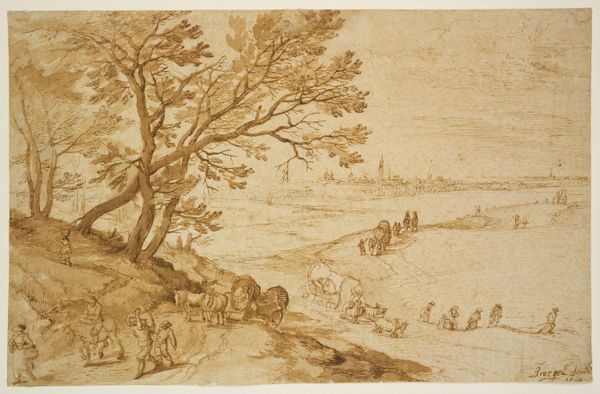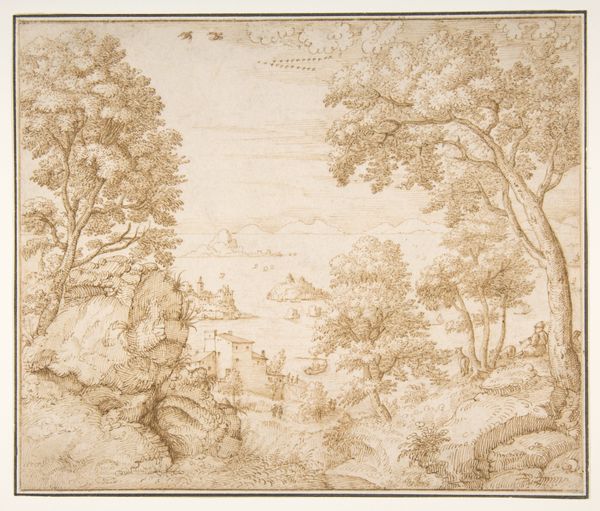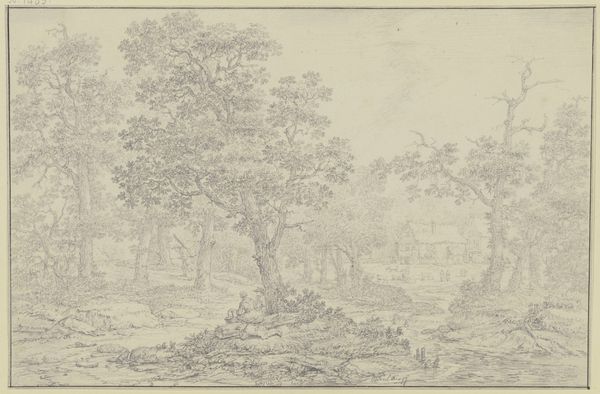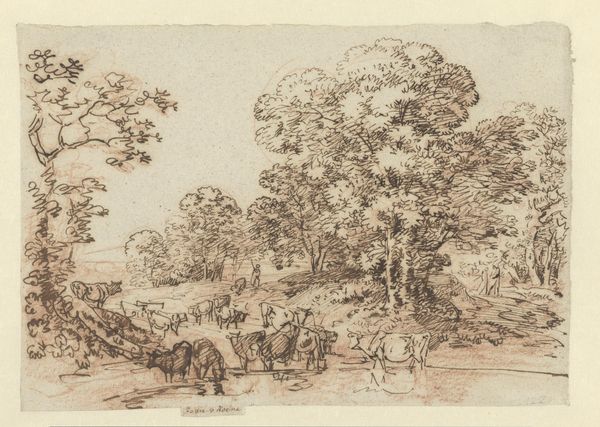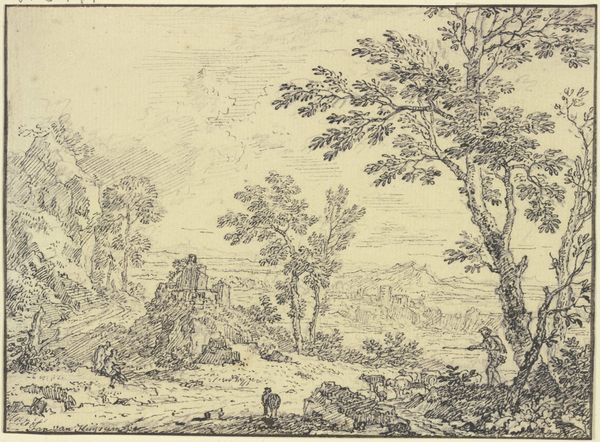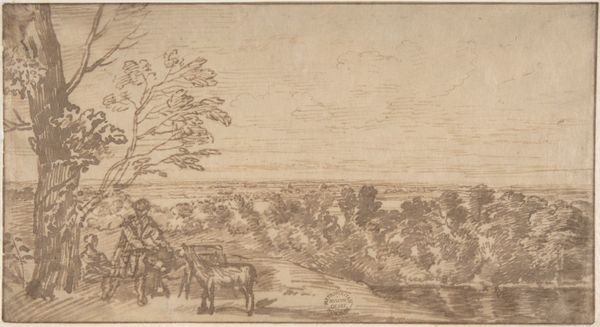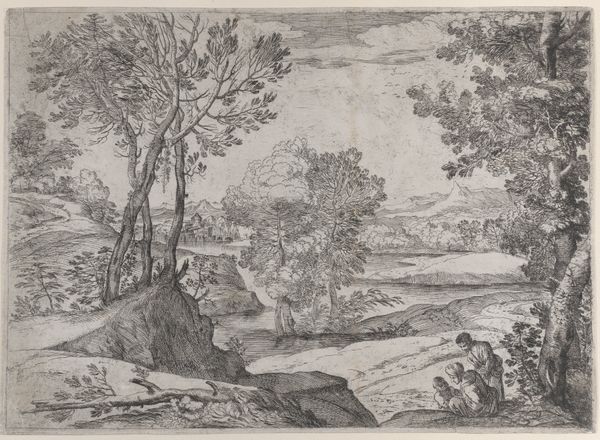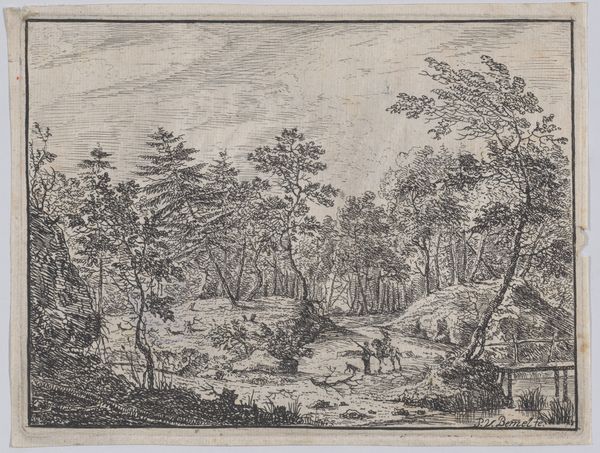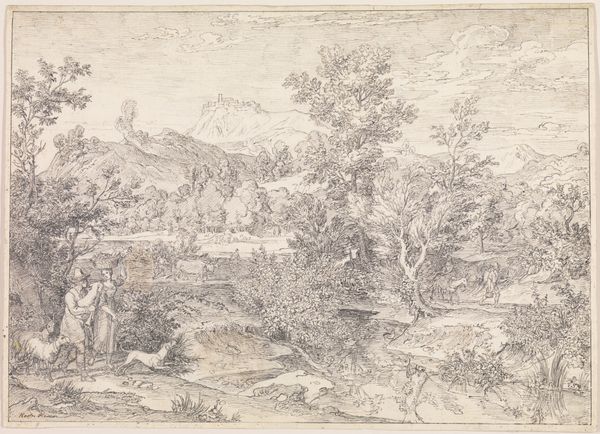
Baumpartie am Wasser, Leute sind auf dem Felde beschäftigt, links am Bach drei Angler
0:00
0:00
drawing, ink, pencil, chalk
#
drawing
#
netherlandish
#
baroque
#
dutch-golden-age
#
landscape
#
ink
#
coloured pencil
#
pencil
#
chalk
Copyright: Public Domain
Editor: We're looking at Pieter Molyn the Elder’s “Baumpartie am Wasser, Leute sind auf dem Felde beschäftigt, links am Bach drei Angler” which roughly translates to "Trees by the Water, People are Busy in the Fields, Three Anglers on the Left by the Stream." It’s a delicate landscape drawing rendered in chalk, pencil, and ink. It feels almost like a snapshot of everyday life. What's your perspective on this work? Curator: Molyn presents us with a seemingly simple scene, but it is rich in the context of the Dutch Golden Age. Landscape paintings at this time were reflections of national identity. The Netherlands had recently gained independence, so depictions of their land became popular statements of pride. Notice the farmers, the anglers. What does that tell us? Editor: That their day to day lives and jobs were shown as pride-worthy? Curator: Exactly. Think about the intended audience. These works were bought by the rising middle class who were eager to establish and flaunt their newfound wealth and status. And through these images, they saw reflections of themselves and the values of their society. Does this change how you perceive the artwork now? Editor: Absolutely, what I took to be an unremarkable snapshot now feels very calculated and symbolic. It’s easy to overlook those societal elements. It speaks volumes about the power of representation. Thank you for showing me how to think critically about Dutch landscape painting! Curator: My pleasure! Remembering that art is always entwined with social and political circumstances allows for a deeper and fuller experience.
Comments
No comments
Be the first to comment and join the conversation on the ultimate creative platform.
